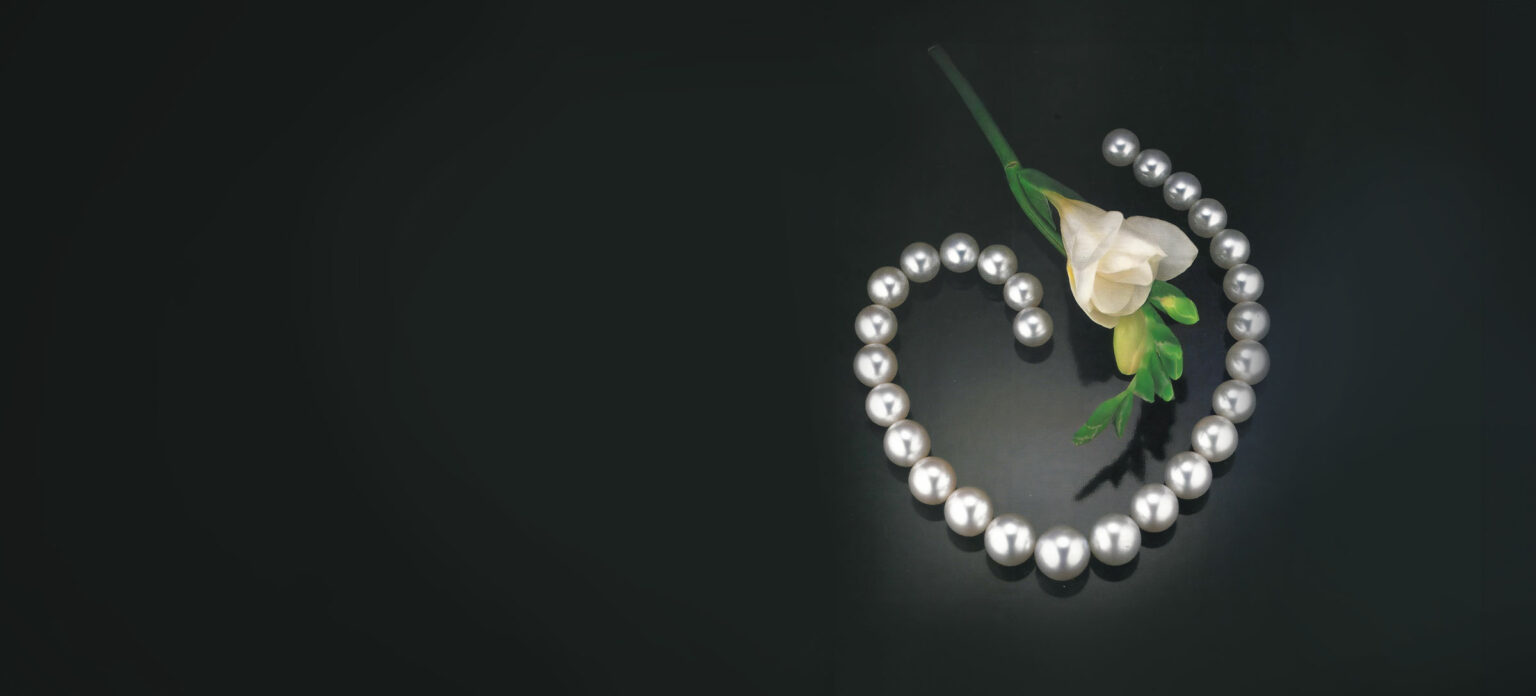The once small league of South Sea pearl farms is growing so fast one is tempted to think that growers have adopted an expansion system similar to that in American sports. Suddenly, pearl farms seem to have cropped up in every lagoon throughout the region. “A week doesn’t go by anymore without a new farm wiring us that it will be holding an auction,” said New York South Sea specialists Albert Asher days after the July 1992 edition of the Jewellers of America Show.
Here, thank goodness, the analogy between sports and pearl farming ends. For while expanding the number of teams in, say, baseball, has weakened the quality of the game, expanding the number of South Sea pearl farms has strengthened the quality of what since the 1960s has been the swankiest organic gem.
Keep your fingers crossed, however. Ordinarily, the rapid increase in pearl production has been the kiss of death for pearl quality. Just look at what happened to Japanese cultured pearls during the 1980s when the emphasis on quantity led to shorter growing times, overcrowding of waters and nacre coatings often so thin they were more leaf than layer.
Mainly because the South Seas, unlike Japan, have plenty of room for growth, no decline in quality—outside of Burma, the birthplace and former showcase of the South Sea cultured pearl industry—has plagued the rapidly increasing production of pearls there. At present, scores of farms are operating in Australia, Indonesia, Malaysia and the Philippines. More are on the way.
The expansion is not speculative but, instead, a response to mushrooming global demand for 10mm-plus cultured pearls. With Japan and soon China, the twin capitals of the akoya (Japanese for conventional-sized cultured pearls) industry, only able to grow sizes up to 10mm, the world must depend on the South Seas to meet insatiable demand for pearl behemoths. “At least five times more manufacturers and designers are using South Sea pearls than two years ago,” Asher notes. “And that’s just in America.”
What is astonishing about the U.S. public’s craving for South Sea pearls is that it hasn’t yet proved nearly as sensitive to the current recession as, say, its craving for fine diamonds, rubies and even sapphires. The market’s resiliency may stem from the fact that it is relatively young. Five years ago, these pearls were virtual unknowns to all but a handful of Fifth Avenue and Rodeo Drive elite. So, even if the market’s growth were of the trickle-down variety it would still have a long way to go before reaching saturation.
Not that demand for South Sea pearls hasn’t been affected by the staunchly recessionary early 1990s. The market reflects hard times by focusing more on single and matched pearls for rings and earrings than collections for strands. Nevertheless, South Sea pearl jewelry is one of the few big-ticket bright spots for jewelers who stock it. That’s why U.S. dealers aren’t yet losing sleep over accelerating South Sea pearl production.
Burma on the Blink
Until recently, it was a trade truism that South Sea pearls were for society’s upper crust. Easy to see why when these pearls accounted for at most 2% of world production and the best and biggest of them—rosy-glow 14mm and 15mm pearls with a subtle silky patina—commanded $10,000 and more at wholesale. Nearly all of these connoisseur pearls came from Burma (now Myanmar), a socialist garrison state in southeast Asia that expelled its Japanese pearl-culturing technicians in 1965 and watched its supremacy in South Sea pearls slowly fade to a distant memory.
Ironically, Burma’s debacle proved a blessing in disguise for the pearl market. Within the last decade, several countries have vied to fill the vacuum in top-grade South Sea pearls left by her decline. And one of them, Australia, has been producing crops that seriously rival Burma’s, both in beauty and bulk—and surpass them in size with pearls up to 19mm. Seeing that a newcomer can seriously challenge Burma for aesthetic leadership, entrepreneurs in other countries have sought to produce high-quality pearls, too. The end-result: an explosive rise in South Sea pearl production.
Mind you, the South Seas are still pygmy producers compared to Japan and China. Akoya pearls are grown in the millions thanks to artificial tank breeding of oysters. South Sea pearls are grown in the scores of thousands from oysters found on ocean floors. Even with the recent emphasis on larger sizes in Japan, many cultivators there (and in China) who specialize in smaller sizes do gang-seeding of oysters so that each mollusk will grow multiple pearls. In the South Seas, it’s usually one nucleus to a shell. Since nacre growth is much faster in the warmer South Sea waters, this variety of pearl is rarely less than 10mm while the akoya pearl grown at slower rates in colder waters and smaller oysters is rarely more than 9mm. Last, growing times are much longer for South Sea pearls: three years vs. 18 months.
Growing Pains
As demand for large pearl sizes accelerates in both Japan and America, the South Seas will take on greater importance to growers. Aware this region is the only source of increasingly popular large pearls, dealers who confined themselves to Japanese pearls or had nothing whatsoever to do with pearls are jumping on the bandwagon. This has made life harder for the handful of specialists who had this market practically to themselves. Instead of holding DeBeers-like sights after every harvest, where goods were allocated to regulars buyers, many South Sea farms stage auctions which anyone from the trade willing to pay the price can attend.
The only thing that has stopped increased competition for South Sea pearls from sending prices through the roof has been rapidly expanding supply from former pearls: Australia, known for lustrous pearls with a much sought-after pink-on-white color; the Philippines, known for light cream colors; Malaysia, known for pearls with faint gray or blue undertones, and Indonesia, known for bright, lustrous pink pearls. Which, unfortunately, are more spotted than other varieties. Unlike the early 1980s when South Sea pearl farms were run mostly by Japanese companies, Chinese firms in Hong Kong and mainland China are also big players in this market.
As farms have become more adept at pearl-culturing, quality has improved sharply. U.S. demand for South Sea pearls is now concentrated on single pearls and matched pairs in 12mm to 14mm sizes, costing $1,200 to $1,500 for the former, $2,500 to $5,000 for the latter. Necklace demand is centered on graduated strands with 12mm to 16mm sizes costing $25,000 to $75,000.
Please note: this profile was originally published in 1992 in Modern Jeweler’s ‘Gem Profiles/2: The Second 60’, written by David Federman with photographs by Tino Hammid.
The 27 unstrung South Sea pearls shown in the header image, many of them from Burma, measure 13mm to 17mm. They were accumulated by Assael International Inc., New York.






